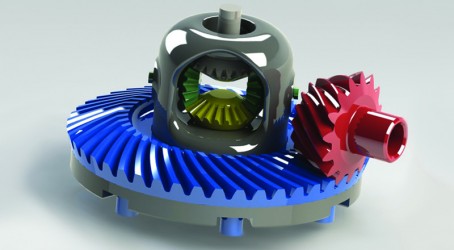A worldwide database of freely available engineering CAD files is the by-product of an expanding community of around 160,000, over 8,000 of whom are in the UK.
The notion behind GrabCAD is the brainchild of founders Hardy Meybaum and Indrek Narusk, two engineers based in Estonia. Their idea was to create a global resource of CAD files that anyone could access and freely download CAD from, as a prelude to either creating new designs or for collectively finding solutions for companies with design or engineering problems.
The range of CAD files available is broad. It stretches from an object as large as a complete aircraft, such as the Boeing 777, to small automotive components. Indeed, the automotive CAD database is the largest in the company’s repertoire.
Everything from simple nuts and bolts to complete assemblies of engines and motor cycles is accessible. The aim is for engineers to show their work and help others with their problems as part of a wider engineering community. Alternatively, assistance can come as feedback or help from others. Copyright protection is assured, the company claims.
From a personal viewpoint, the database is also a way of establishing a strong portfolio of CAD files and demonstrating an engineer’s expertise, to allow them to get noticed by his/her peers, partners or potential new employers.
GrabCad is a start-up business launched around two years ago that has been funded by private equity. What began as a CAD site established when the founders started working for clients has grown rapidly as more and more engineers have joined the community. At present, the private equity is funding the salaries of employees, but the aim is for the company to generate income through new products.
Among the subjects covered are architecture, automotive, aviation, electrical, machine design, marine and tools. The range is wide, from something as mundane as furniture to the more complex, such as weapon systems and jet fighters.
Typical of the CAD files are: a two-spool high bypass turbojet engine; bearings; a robot-controlled welding station; a Ford GT40 model imported from mesh; an automotive custom rear upright in SolidWorks; a feeder for an automatic lathe; an aircraft rotary engine; a combined turbine and centrifugal pump in SolidWorks; a sealant applicator in SolidWorks, an assembled M4 automatic; a hydraulic motor in SolidWorks; an aircraft landing gear; plug vales; and a steam engine.
Engineers are drawn from countries as far apart as Brazil, China, India, Russia and Australia. The only principal region currently not participating is central Africa.
Chief engineer Kaspar Kiis explains that, as an example, anyone wishing to design a bicycle has no need to start at the beginning because the basics already exist in GrabCAD. These elements can be used as the basis for any new design of bicycle.
A feature of the activity has been several ‘challenges’ in which companies facing design and engineering challenges have sought help from the worldwide community of design engineers. Companies that have issued challenge’ include the 500 Group, for a supercar body challenge; Koenigsegg, seeking a solution to a hood release handle; and Shelby, which needed help with the interior design of another supercar. Prizes are awarded for the best submissions.
The aim is for GrabCAD, which employs a staff of 15, to be self-sustaining and for the company – which has offices in Tallinnn, Estonia and Boston, Massachusetts – to develop programs that will benefit the wider CAD community. GrabCAD expects to launch its first new product in the next few weeks.
Looking to the future, the provisions and development of CAD files for engineered parts, coupled with the technology of additive layer manufacturing as applied to Bladon Jets gas turbine components (see our PE March article), opens up the prospect of ‘home manufacture’ of components – not dissimilar to the 18th-century UK domestic system when, before the arrival of the ‘factory’, much textile work was handled at home and on
a small scale.
If the practice were to be developed further, it could be the death knell of some manufacturing concerns, as more and more small-scale work is outsourced, offering a new 21st-century industrial revolution.
